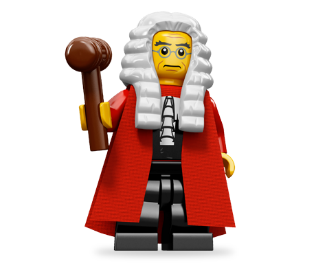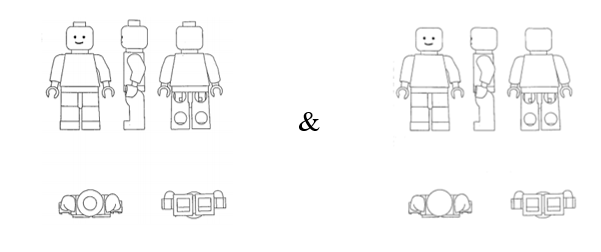


LEGO S/A successfully defends its mini-figures
July 17, 2015
Categories:
Beitragsdatum:
17. Juli 2015 - 5:31
The European General Court (EGC) upholds the registrations of the shape of the Lego mini-figures as Community Trademarks (CTMs) (Judgments dated 16 June 2015; Cases T-395/14 and T-396/14).
Background of the Case and Subject Matter
On 18 April 2000, the Danish company Lego Juris A/S registered the following three-dimensional CTMs (No.: 000050450 and 000050518) with the Office for Harmonization in the Internal Market (OHIM) in respect of, inter alia, games and playthings. Bevor, these registrations, the mini figures were protected under a technical patent which was registered in the 1970s.
In 2012, the British competitor Best-Lock, which uses similar mini - figures since 1998, applied for a declaration of invalidity relating to all of the goods protected by the CTMs. The application was based on the fact that the shape of the goods in question is determined by the nature of the goods themselves. Furthermore, Best-Lock is of the opinion that the toy figures in question, both as a whole and in their particulars, involve a technical solution because the shape of the mini - figures are determined by the fact that they are part of a toy that involve “interlocking building blocks for play purposes”.
OHIM rejected the applications for a declaration of invalidity. Therefore, the toy manufacture Best-Lock applied to the EGC for annulment of OHIM’s decisions.
Decision of the Court
The EGC dismissed Best-Lock’s appeal.
First of all, the EGC rejects the complaint that the shape of the goods in question is determined by the nature of the goods themselves because Best-Lock has not put forward any arguments to support that assertion.
Moreover, the EGC came to the result that the key elements (heads, bodies, arms and legs) of the shape of the mini - figures did not actually involve the ability to join them to other building blocks. Particularly, the graphical representation of the hands of the figures, the protrusion on their heads and the holes under their feet and inside the backs of their legs do not necessarily enable it to be known whether those components have any technical function and, if so, what that function is. Therefore, the EGC came to the result that there is no evidence which prove to permit the inference that the shape of the mini - figures is, as such and as a whole, necessary to enable the figures to be joined to interlocking building blocks.
Moreover, the court is convinced that the purpose of the shape is just to confer human traits on the mini - figures. These are necessary because the figures represent characters which are used by children in an appropriate play context.
Consequently, the EGC concludes that the characteristics of the shape of the figures in question are not necessary to obtain a technical result.
Related
- "Neuschwanstein" is not a trademark!
- 14 June 2013: Munich Patent Law Conference - Calculating Damages in Patent Infringement Cases
- 15 Top Brands - Interactive Brand Rating - Years 2000 - 2018
- 2014: Statistics for Community Trademarks
- 27 June 2014: Munich Patent Law Conference – Burden of Pleading and Proof in Patent Infringement Cases
- 3D-Trademark Protection for layout of Apple Stores
- 40th Anniversary of the European Patent Convention (EPC)
- A backpack shape as a 3D trademark – a BoA decision of the EUIPO
- A case of „Bounty“ hunting in Germany
- A new report on the economic impact of counterfeit trade published by OECD and EUIPO

